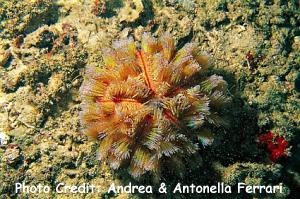
By Bob Goemans

Not Reef Tank Suitable
Likely Fish-Only Tank Suitable
Range: Indo-Pacific Ocean: Japan.
Size: 15 inches (38 cm)
Natural Environment: Inhabits shallow reef areas and found in caves and crevices during the day and feeds at night.
General Husbandry: Rarely seen in the home aquarium trade.
Basically stays still, usually under ledges during daylight hours and when evening arrives, begins its search for food, both algae, and other invertebrates including live coral polyps, soft and stony.
Best suited only for large fish-only aquariums.
Should, when seen moving, be fed small pieces of fish or mussel flesh daily.
In aquariums somewhat devoid of algae, small plaster-of-Paris feeding stones that contain seaweed and algae can also sometimes help lengthen lifespans of these urchins in aquariums.
Taxonomy:
Kingdom: Animalia
Phylum: Echinodermata
Class: Echinoides
Order: Echinothurioida
Family: Echinothuriidae
Genus: Asthenosoma
FYI: Has venom-tipped spines that can inflict extreme pain.
Vulnerable to sudden salinity/specific gravity changes.
Triggerfish and large wrasses will eat these urchins.
Experience Level: Expert
Diet: Omnivore
Aquarium Environment: Fish-only aquarium
Coral Safe: No
Fish Safe: Yes
Invertebrate Safe: No
Acclimation Time: Sensitive to specific gravity/salinity changes, therefore be sure to adjust the bag's water to that of the aquarium in which it will be placed by slowly adding small amounts of aquarium water to the bag every few minutes. In most cases, this process should take at least 15 minutes.
Aquarium Hardiness: Moderately difficult
Temperature Range: 72 - 79°F (22 - 26°C)
Minimum Tank Size: 200 gallons
Specific Gravity: 1.023 - 1.025
pH: 8.0 - 8.4
